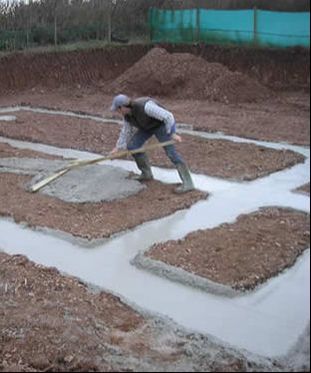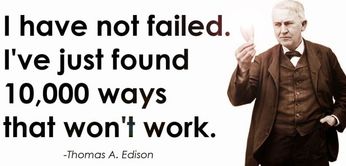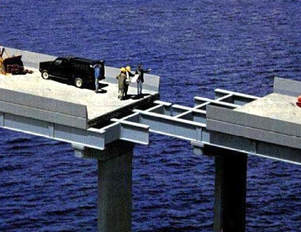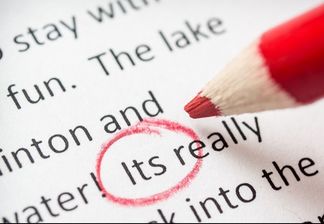Tips and tricks:
Supervising students
|
With the start of the semester, many PhD students get the opportunity to supervise bachelor or master students, on a project with a topic related to their work. As such, the student can be seen as a tool to perform work for the PhD student. However, the reasons for taking charge of a bachelor or master student are more diverse. Moreover, supervising in an efficient manner may be more challenging that initially considered. Accordingly, below some tips 'n tricks!
|
Learn to project manageAs your student may work on a related topic compared to what you are doing, planning and managing the activities of your student becomes crucial. A well-managed master student will bring him/her and yourself further. Of course, being a good project manager is an important feature for any future career.
|
|
Subject and groundwork:
|
Plan aheadAgain, as time is limited, you need to plan ahead. Think of availability of chemicals, equipment, rooms, and/or supportive staff. Wasting a few months because the schedule was booked out is simply not done. Should it be unavoidable, plan alternative activities for these periods. These could be alternative experiments or may be a targeted literature study...
|
Social Integration of the studentWhen your student arrives, he will be often submerged in a new culture. Hence, try to integrate the little lass/lad as best as you can. Alternatively, it could be the case that he/she is already tightly bound within social scene. In this case the student may even help you to integrate!
|
Careful start: literatureWhen your student arrives, it may be hard to get a quick and accurate insight into her/his capabilities. Setting the student loose on a little well-targeted literature study for 1-2 weeks is always a useful exercise. It teaches the student more about the work (to be) done. In addition, the length and accuracy of provided end result enables you to judge whether your student is thorough and critical... Fingers crossed!
|
Careful start: reproduction experimentsAlso technical skills may be hard to judge initially. You could spend some time (max 1 week or so) to have your student reproduce some experiments you have already performed (perhaps the work you did within the groundwork phase). If things are okay, the student will be directly confident about the interesting result. In addition, you will feel more confident that the future results will be reliable, and therefore, valuable.
|
Careful start: safetyThis comes naturally, make sure all operations in the lab can be done in a safe and certified manner. Next, make sure that the student is aware of the safety regulations as well. Remember that it reflects extremely poorly on a supervisor if somebody they take care of gets hurt. Safety first therefore! Please note that this accounts for physical as well as mental health. Regarding the latter, you can learn more by clicking on the below button:
|
Integrity test: a false hopeSadly, occasionally frauduleus, suggestive, or 'overly-massaged' data can be presented by your student. However, this not always follows from him/her being a 'bad' or 'deceitful' person, but can also simply be due to a fear of letting the supervisor down. This occurs more often in cultures with a strong sense of hierarchy (like Asia). It is therefore a good exercise to let the student execute a few experiments of which you know the outcome. However, you tell the student you expect a completely different outcome. By giving them this 'false hope' you are able to monitor their integrity. If they do well and report the 'anomaly', you can simply admit you were wrong and made a mistake. However, if they present you with the impossible and clearly erroneous data, you need to have a good chat with them.
|
Be ready for failureWhen the project is underway, you may find out that, despite all the ground work, something does not work. This may be due to the science itself, or the inexperience of the student. In any case, although the negative result can demotivate you, this failure is an integral part of science. When this happens, it is best to be as positive as possible. After all, the knowledge that something does not work may be very valuable!
|
Adjust according to skillsIt may also be the case that the role you expected to student to fulfill does not fit. For example, the student may simply not be able to overcome some technical or theoretical challenges. Alternatively, you may see that the student can do more and more independently as you expected. In both cases, to maintain productive and good work motivation, an adjustment of the work tasks may be beneficial...
|
Adjust according to successWhen the student has tried a few things that do not work, a few that work 'half way', and something that works extremely well, you may want to consider to focus on the very nicely working configuration. Focusing on the best configuration will provide the greatest scientific satisfaction.
|
Timely progress meetingsWith the student nicely underway working, experimenting, writing, etc. make sure to have timely progress meetings. After all, the entire endeavor may benefit from a few wise words from your side. It also enables to prevent scientific train wrecks from occurring. Lastly, the student will greatly appreciate the display of interest in their work!
|
Stay professionalAlthough fun is important in the job, it is also essential to stay professional. This implies that when your student can do better, is going towards the wrong direction, or is simply not suitable for this kind of job, you owe it to them to tell them this in a professional fashion (timely and objectively). Wouldn't you agree, Melania?
|
Thesis time: communicate expectationsAfter a while, it will get down to writing all the work down in a thesis. The student's thesis is not only valuable for the student. It also provides a valuable readable form of all the work for future reference for the supervisor. Hence, make sure that you communicate to the student exactly in what form you expect the thesis. Of course, make sure the guidelines by the institute/university are met...
|
Thesis time: what to includeIn science things don't always go as planned. Accordingly, the experiments the student executed may not all fit to form a coherent story. In this case you may have to agree with the student which parts to include. Putting only the data in that worked well, may provide the most consistent story. However, putting all experimental data in reflects the efforts of the student better. In addition, it provides a more complete documentation for future reference. Hence, think twice before deciding...
|
Correcting theses: main issues firstReceiving the thesis of the study for the first time can be a bit daunting. The quality/contents may not be as you expected. Sometimes for the better, sometimes for the worse... In any case, to make the revisions streamlined, focus on the big issues first. It does not make sense to start correcting grammar mistakes when the entire section should be changed or even removed.
|
Correcting theses: constructivelyWith the main issues sorted, you can try to correct the thesis. Since it is your responsibility to teach, it is most constructive to give examples of alternative more-correct alternatives of sentences or figures. Doing such constructive correcting may take a bit more time, but the end product (thesis and student) will be better of in the end...
|
Honest evaluationFinally, when the student has finished you need to grade. In this matter, try to be honest and objective. It is useful to ask people around how they judge and what their opinion is, and what the system of grading in your institution looks like. Failing a student is usually done only in exceptional cases. Passing with a minimal grade can be interpreted as a "graduate-and-now-please-leave' option. On the other hand, giving very high grades is also exceptional, and should be limited to avoid 'grade inflation'. Think and consult wisely...
|


























